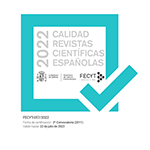Population dynamics of Ericaria zosteroides (Ochrophyta, Fucales) in the central Mediterranean
Abstract
Ericaria zosteroides is a canopy-forming macroalga belonging to the order Fucales, which dominates Mediterranean deep-water stands. In the present research, populations of E. zosteroides from three locations (Santa Maria La Scala, Scalo Pennisi and Acque Fredde) along the central-eastern coast of Sicily (Italy, central Mediterranean) were monitored for five years (from 2017 to 2021). E. zosteroides from all locations in this area share a common phenology: recruits start to appear between January-February; then during spring the frond grows and becomes fertile; in summer it begins to thin out until the autumn when almost all branches have been lost; and finally at the beginning of winter, new primary branches start to grow from the tophules. Nonetheless, we detected a difference in the most frequent size class among the studied populations, being 9 cm at Santa Maria La Scala, 6 cm at Scalo Pennisi and 4 cm at Acque Fredde. This difference could be due to the current regime, related to the tidal currents of the Strait of Messina and upwelling currents of the Ionian Sea, and the coastal morphology which determines local variations in this regime, with multiple eddies characterised by marked directional instability. The low growth rate and dynamics of these stands make them very susceptible to recovery from anthropogenic impacts. Considering that E. zosteroides is a threatened species according to the Barcelona Convention, it would be crucial to ameliorate the conservation status of the investigated populations, which currently do not present any level of protection, in order to promote their future viability.
Downloads
Article download
License
Mediterranean Botany is an open access journal to promote global exchange knowledge. It facilitates unrestricted access to its contents from the moment of publication in its electronic edition. The originals published are property of the Universidad Complutense and it is mandatory to cite such source in case of total or partial reproduction. All contents are distributed under a Creative Commons License 4.0 (CC BY 4.0). This circumstance must be expressly stated in this way when necessary. You can check the informative version and legal text of the license.














